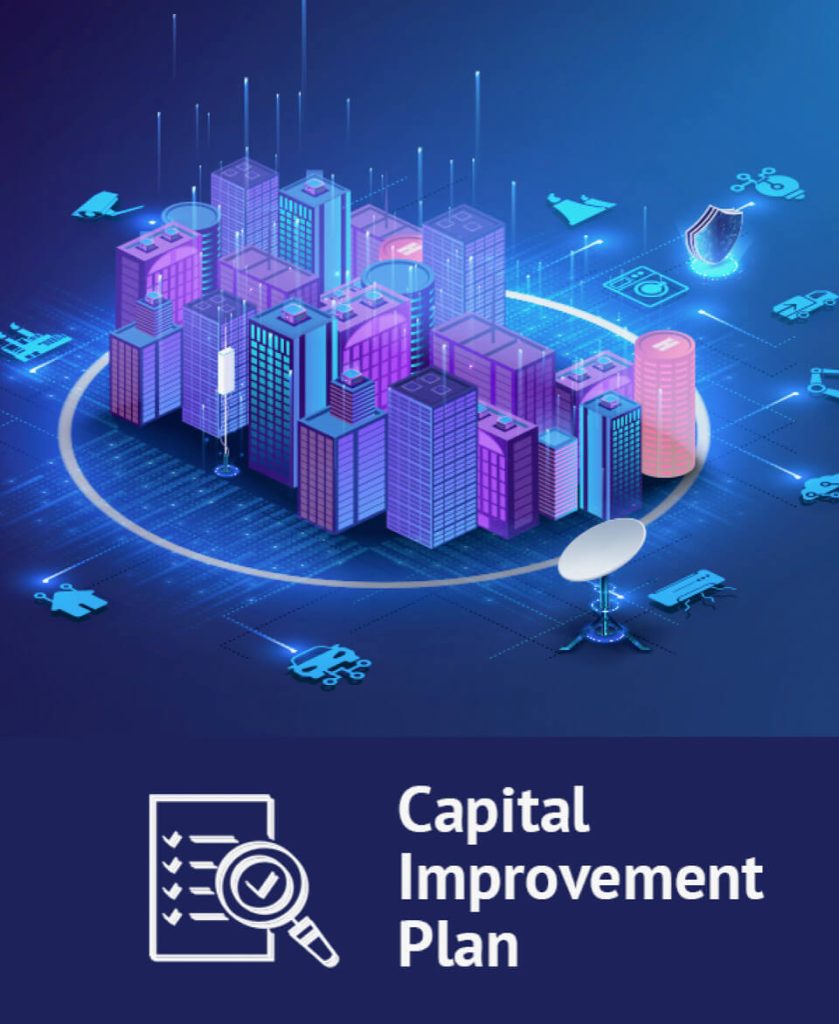The Des Moines Metropolitan Wastewater Reclamation Authority (WRA) faces several infrastructure challenges. One of the primary challenges is maintaining and upgrading aging infrastructure, including pipes and treatment facilities. Another challenge is meeting increasingly strict regulatory requirements, particularly for nutrient removal. In addition, the WRA must balance the need to provide reliable wastewater treatment services with the need to manage costs for its customers. Finally, the WRA must plan for and adapt to changing weather patterns and increased precipitation, which can impact the capacity and effectiveness of its treatment facilities.

Sample Highlights from the Capital Improvement Plan
Project ID
Project Title
Project Start Year
Project Description
Project Spend Total
Page Ref
Project Satus
599491
WRF Aeration Improvements
2024
“The project will convert the existing 4-pass nitrifying activated sludge process system to include an anoxic/anaerobic zone in pass one of
each basin, and the project will replace corroded electrical conduits, replace existing membrane disc air diffusers and associated piping,
and replace the existing four 2,000 HP process air blowers.”
23225000
33
Not Started
599493
WRF Disinfection Improvements (on hold)
2024
“The project will construct a new effluent pump station at the existing chlorination contact tanks to discharge flow from the WRF in high Des Moines River
conditions. In addition, the project will construct a new disinfection facility at the east end of the WRF to provide disinfection for the future capacity of the WRF.”
32850000
34
Not Started
599495
WRF Parallel Pipe and Mixing Structure (on hold)
2026
“The project consists of the installation of a parallell 60-inch pipeline between the roughing filter control chamber and the secondary treatment facilities
along with a structure to connect and mix flows.”
5024400
35
Not Started
599500
WRA Common Trunk
2024
“An approximately 11,700 foot 54-inch diameter sewer pipeline paralleling the original WRA Common Trunk located in Windsor Heights,
West Des Moines and Des Moines.”
907000
38
Not Started
599507
WRF Secondary Treatment
2029
“This improvement includes adding two additional aeration basins and four final clarifiers, modifying existing aeration facilties, and all site facilities to enhance the existing
conventional activated sludge process.”
76000000
40
Not Started
Explore all options available to you!
Citylitics offers access to over 30,000 unique locations across North America through our Capital Projects Dashboard (CPD).
Capital Projects Dashboard (CPD) provides a comprehensive market view of all planned infrastructure spend in one single view with powerful filters such as: population, project value, fiscal year, project status, project description, geography, and more. The dashboard will help identify opportunity hot spots, create data-driven forecasts you can be confident in with bottom-up data for the next 5 years of planned infrastructure spend, and uncover true market needs.
How to Read a Capital Improvement Plan (CIP) for Business Development?
When a city, municipality or state issues a Capital Improvement Plan (CIP), it can be overwhelming and daunting, but there are a few key things you need to investigate. Let’s start with the definition of CIP – A Capital Improvement Plan (CIP) contains all the individual capital projects, equipment purchases, and major studies for a local government; in conjunction with construction and completion schedules, and in consort with financing plans. The plan provides a working blueprint for sustaining and improving the community’s infrastructures. It coordinates strategic planning, financial capacity, and physical development. A CIP stands at the epicenter of a government’s Planning, Public Works, and Finance departments. When a CIP is issued, it typically includes the following information:
- A listing of the capital projects or equipment to be purchased
- The projects ranked in order of preference
- The plan for financing the projects
- A timetable for the construction or completion of the project
- Justification for the project
- Explanation of expenses for the project
Now, for business development, while the capital plan is interesting, the capital program is for capital expenditures that extends five to ten years beyond the capital budget. Knowing the difference is important so you can influence upcoming program versus just responding to an RFP. If reading the CIP makes your head explode, or you want to save time, Request a Demo of Citylitics CIP dashboard with over 20,000 CIPs from USA and Canada. Citylitics has 20,000 plus available CIPs, how can we help you? What states, cities or counties are you looking to improvement your business development, we can assist you in influencing an upcoming RFP versus simply responding to an RFP. Citylitics Capital Projects Dataset is a comprehensive resource for businesses and organizations looking to track and analyze planned infrastructure spend in their area. The dataset offers a range of features and benefits, including:
- Comprehensive Market View: The dataset provides a single view of all planned infrastructure spend, with powerful filters such as population, project value, fiscal year, project status, project description, geography, and more. This allows businesses to gain a comprehensive understanding of the market and identify new opportunities.
- Identify Opportunity Hot Spots: The dataset offers map views and filters that allow users to identify opportunity hot spots where they need to allocate resources. This helps businesses to understand where they should focus their efforts to achieve the best results.
- Create Data-Driven Forecasts: The dataset provides bottom-up data for the next 5 years of planned infrastructure spend, allowing businesses to create data-driven forecasts they can be confident in.
- Uncover True Market Needs: The dataset allows businesses to develop long-term business plans, R&D, and growth initiatives based on true, bottom-up market needs instead of opinions and anecdotes. This helps businesses to make more informed decisions and achieve better results.
With Citylitics Capital Projects Dataset, businesses can gain a deeper understanding of planned infrastructure spend in their area, which can help them to identify new opportunities and make more informed decisions.
